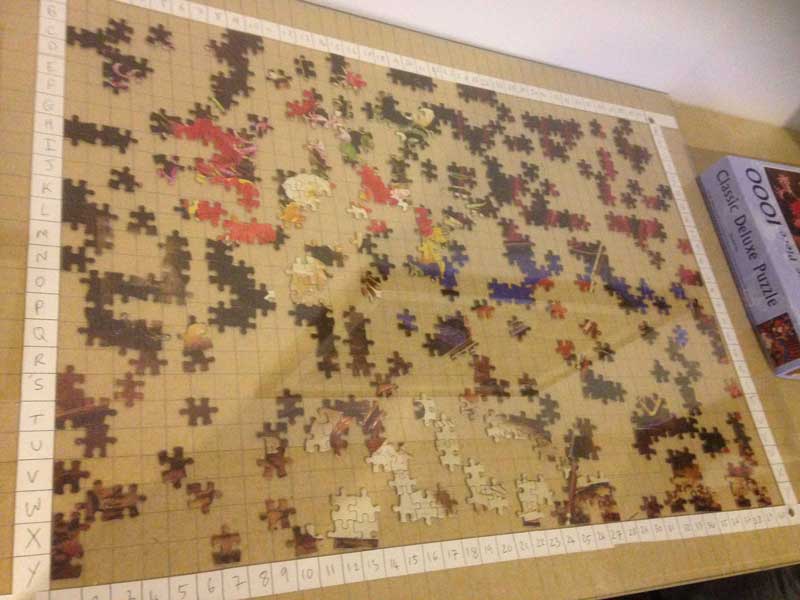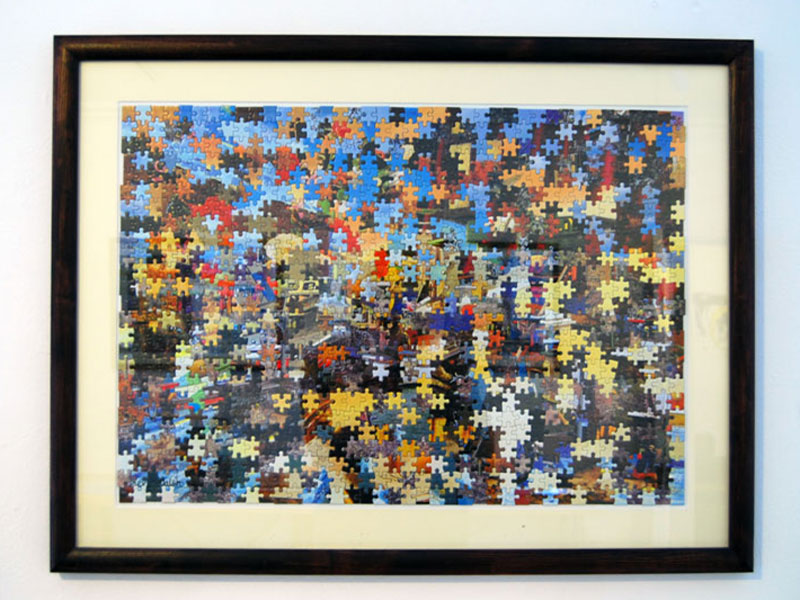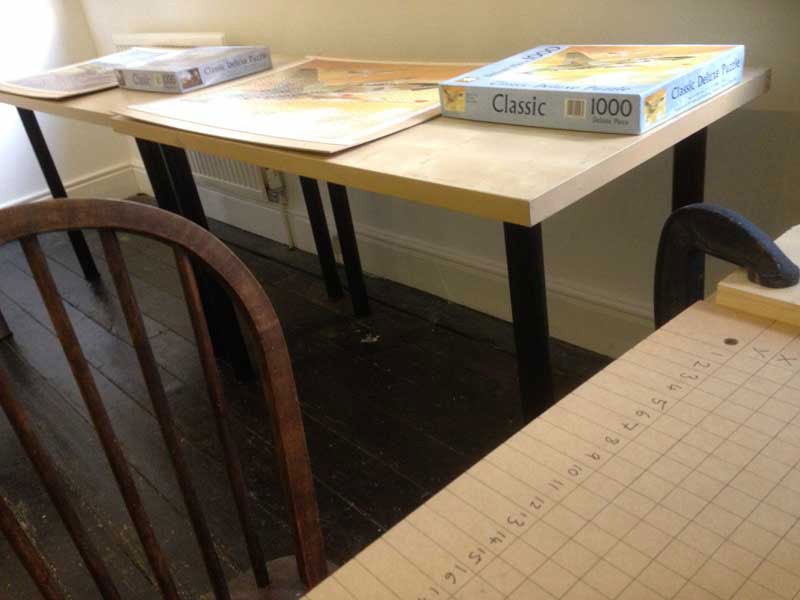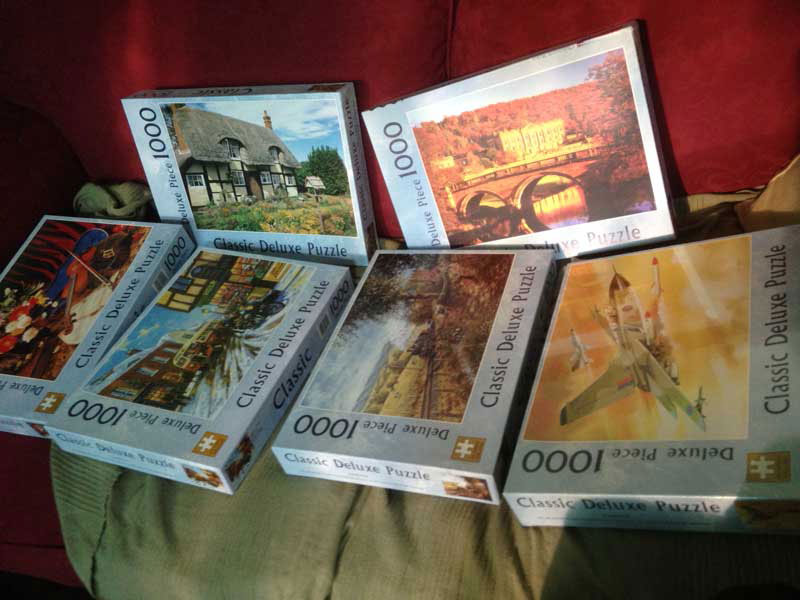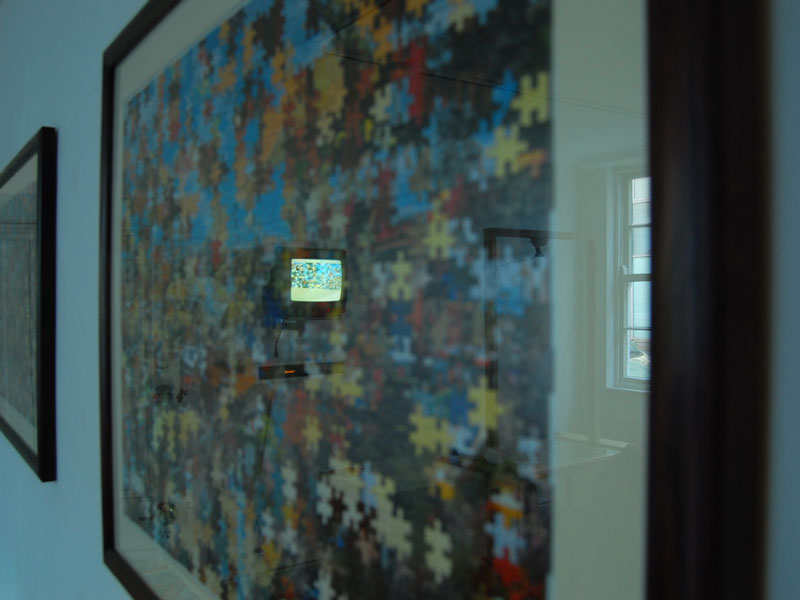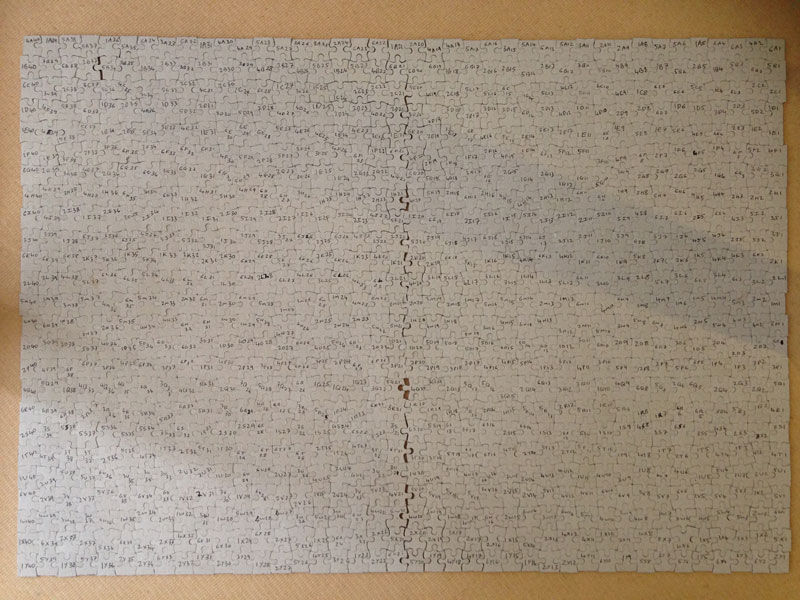Category: Uncategorized
Rejected pixels
These are the jigsaw pieces, or pixels, which were rejected by conceptual glitches in the process, leaving dead pixels/empty spaces in the images.
Left to right: (first number is original jigsaw number 1-6, followed by grid position. Letter = y axis, Number = x axis.)
2B36 from #2; 1B20 & 5X6 from #3; 6X5 from #4; 6B36 from #5
![]()
They are discrete pieces of information which never arrived at their intended destination. In a digital process, they would have disappeared off into the ether, but these physical pieces are trapped in purgatory (my wallet).
I’m not sure what to do with them.
Summary of jigsaw features…
Circuit-bent jigsaw #1: Generated on Friday 6th February 2015, between 11:01:06 and 15:59:10. Greatest number of possible permutations possible (see here for a very large number). Also, a number 2 was thrown 8 times in a row (O14-O21). The odds of this are 1,679,615 to 1.
Circuit-bent jigsaw #2: Generated on Friday, 13th February 2015, between 11:00:52 and 16:44:08. First conceptual glitch observed at B36. See this post.
Circuit-bent jigsaw #3: Generated on Friday, 20th February 2015, between 10:30:05 and 15:41:52. Two different types of conceptual glitch observed at B20 and X6. See this post.
Circuit-bent jigsaw #4: Generated on Friday, 27th February 2015, between 10:31:55 and 15:33. Conceptual glitch observed at X5.
Circuit-bent jigsaw #5: Generated on Friday, 6th March 2015, between 10.52:05 and 15.37:35. Conceptual glitch observed at B36. Room filmed for this performance. The most demanding of the six performances.
Circuit-bent jigsaw #6: Generated on Friday, 13th March 2015 between 10.31:10 and 15.45:57. The concluding piece and the subject of this blog post about whether to throw the dice or not. The most unusual to perform.
A pertinent quote:
“All decisions are beforehand, so execution becomes a perfunctory affair.”
– Sol Lewitt
#6: Die another day?
Circuit-bent jigsaw #6 brought with it a quandry.
The rest of the pieces having formed the 5 other jigsaws, there would be only one piece to fit into each grid position, or pixel. Practically speaking, there was no need to roll the dice, because only one piece was possible. I would be able to see where the next piece should come from much more easily than in previous weeks, so it should be much easier and faster to complete #6. So, no need for the dice.
This, for some reason, did not initially feel particularly at odds with the process. This last generation would simply be a matter of “tidying up” the leftover pieces into the final finished image. But by that rationale, it would be fine to take a clump of joined-up pieces and add them to the new image as a group.
This most definitely did not feel right. I had somehow lost sight of the fact that that what the system would do is carry on precisely as it had been operating for the previous five generations, throwing the dice and beginning the search at the given starting point and searching in a clockwise manner. It became clear that I must continue to follow the whim of the dice, ignoring my own observations as to where in the room the relevant piece was located (thankfully my memory is so poor, this was not as frustrating as it might have been). Though this process would have no effect on the image, it is the only constructive process that had been put into place, and therefore must be followed, ignoring the human urge to speed up the process by increasing efficiency and inventing shortcuts.
The system is indifferent and immune to these gestures towards innovation.
2 types of conceptual glitch…
Circuit-bent jigsaw has 2 purposes:
1) to mirror the processes involved in glitch art and thus create aesthetic glitch images through randomisation, and
2) to put into place the conditions under which true conceptual glitch, i.e. unplanned accidents, could occur and possibly be recorded in the images.
At times, I have felt like a physicist deep underground, waiting to observe and document an elusive particle that exists up to now only in theory.
Over the course of the 6 jigsaw generations, two types of glitch were observed:
Firstly, the glitches as a result of a manufacturing anomaly seen at B36 (#2 & #5) and X5 (#4) and X6 (#3), as described in the post mentioned above.
Secondly, in #3, the glitch at B20. This occurred only once across the 6 performances. In short, because of the irregularities around the centre line (again, explanation in this post) there are possible “big versions” and “small versions” of all of those pieces bordering the 20/21 columns (just as is seen on the jagged edges of each jigsaw). On this occasion, a perfect storm occurred in which all of the surrounding large versions were chosen, encircling the B20 grid position, making it too small to enter the piece. Information rejected. Dead pixel.
#3 is the only jigsaw to contain both types of glitch:
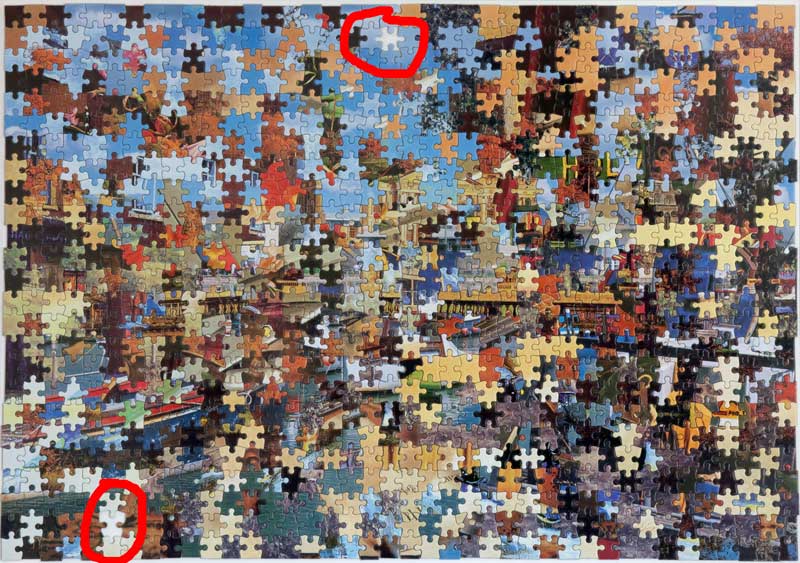
The jigsaws…
…were made by JHG Jigsaws, who were the only company that I could find who could cut all jigsaws along the same pattern.
I was given a list of those images that were possible, and I drew lots to choose the six final images. It was important that no aesthetic judgement was allowed into the process.
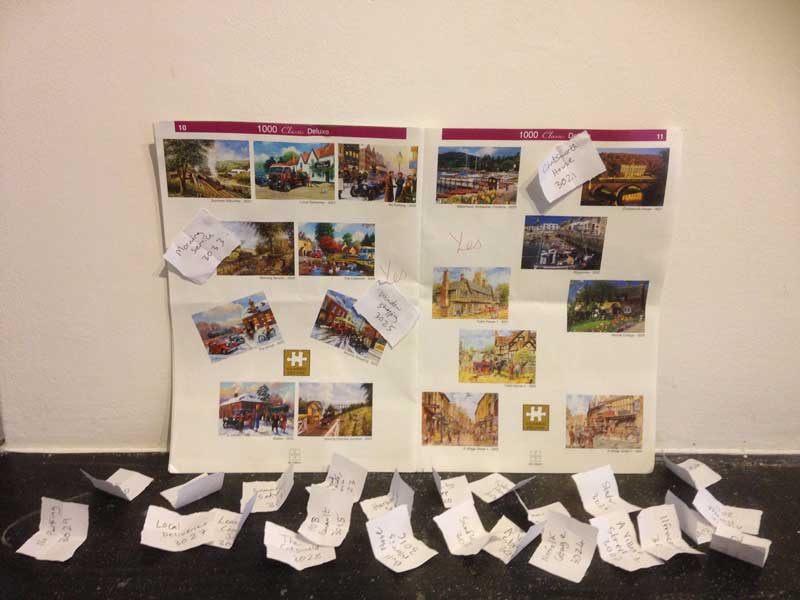
The palettes are looking interesting
